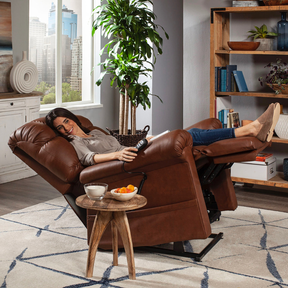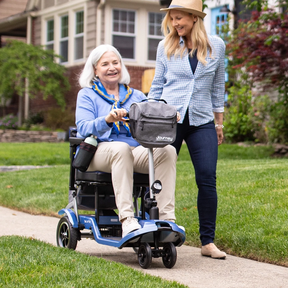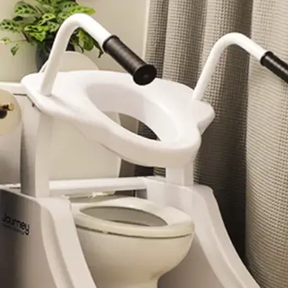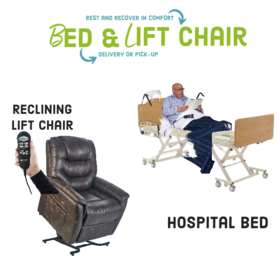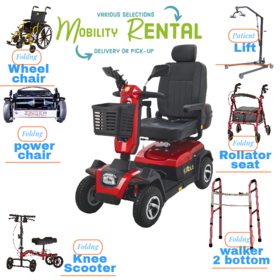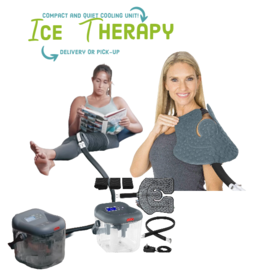Blog How can ice therapy machine compression therapy helps recover quick
Wed, 04/13/2022 - 19:31

How ice machine compression therapy helps you?
Combining cold therapy and compression therapy can result in optimum pain relief and reduced swelling. Cold treatment combined with compression therapy is significantly more effective at healing injuries than just one of those therapies alone. There are many benefits to cold compression therapy, including reducing pain, swelling, and edema and improving healing, muscle recovery, and stimulation of blood flow. With Sky Medical Supplies, cold therapy (or cold therapy unit) and compression are combined into one device that provides intermittent compression therapy.
The compression pump releases and re-inflates it by compressing the wrap to the desired pressure and holding it for 10 seconds. Static compression has proven ineffective because the blood is moved more efficiently, helping push the swelling out of the system with intermittent compression. Cold therapy machine is available at Sky Medical Supplies, including frozen gel packs or ice bags, which have been proven to relieve pain.
Use of ice machine compression therapy
Cold and compression therapy may be utilized in various situations, including post-operative rehabilitation (such as recovery from MCL and ACL surgery), injury recovery, and pain management. RICE stands for Rest, Ice, Compression, and Elevation and is often used by athletes to treat injuries. Assuming you are rested and elevated appropriately, Sky Medical Supplies have advanced technology machines to make compression therapy more effective.
Compression is an effective way to reduce swelling and edema on its own. Intermittent or active compression moves swelling out of the injured area and to the body's core, where the lymphatic system can deal with it. As a result, this compression also enhances blood flow, allowing the injured area to receive more oxygen.
Cold therapy has also been proven to reduce pain and swelling, allowing you to recover faster and more comfortably. It is recommended that patients alternate cold and warm treatment for 20 minutes at a time. Our suggestion is first to freeze your gel pack for one hour, then place it on the affected area for 20 minutes, and return it to the freezer while your body rests from the ice. It has been shown that therapeutic cold temperatures are between 40 and 50 degrees Fahrenheit, contrary to the assumption that "the colder, the better." Research has found active compression combined with cold therapy increases blood flow and decreases swelling, edema, and spasms. In addition to making a recovery less painful and more comfortable, applying ice or cold to your injury can speed healing.
You can expect a faster and more pleasant recovery by taking advantage of cold compression therapy. Compressed ice is applied to moderately injured areas such as joint pain or recovering from major surgery (like those recovering from ACL surgery or knee operations), and everything in between. The recovery of muscles after training can also be aided by compression and cold therapy systems to lessen the nagging pain afterward. Using cold and condensation on achy, overworked muscles will help pump blood to the area, help reduce swelling, and help you function better. You can be ready for the next exciting life event faster without downtime.
What are the Benefits of Ice Therapy and Cold Compression Therapy?
After surgery, cryotherapy has been shown to reduce pain and swelling and decrease the need for narcotic pain medications by helping patients recover from minor discomfort and pain. Several patients comment on how ice therapy allows them to recover with slight aches and pain following surgery.
Aside from aiding the healing process, cold compression therapy decreases swelling and increases mobility. As a result, it would be an excellent option for my patients who have just undergone foot and ankle surgery. Patients report improved recovery, decreased pain and swelling, and easy use of cold compression devices or rental ice machines, such as Breg Polar Care Kodiak or Wave.
Cold compression is an optional treatment. Some patients may use ice or cold packs made from their home refrigerators. However, these alternatives can be less expensive and less effective.
How Often and for How Long Should I Use Cold Therapies?
Cold compression should be used as often as possible for significant joint surgery within the first two weeks following surgery. If awake and alert, you should use the cold compression unit for an hour and then 30 minutes off. Exercises after the surgery and other day-to-day activities should be performed outside the machine.
Top Uses of ice-machine Compression Therapy in Physical Therapy
Achilles Tendinopathy:
The cold compression unit creates better surface contact by applying air pressure to the heel and ankle, allowing the system to remove heat more effectively and reducing pain and swelling. Furthermore, active pneumatic compression simulates the body's natural muscle contractions, stimulating blood flow while eliminating edema.
Multiple Sclerosis:
Researchers have shown that a slight decrease in body temperature can temporarily relieve symptoms associated with MS. Cold compression therapy penetrates deeper, works faster, and lasts longer than any other treatment modality. A cold compression unit can also be used to treat multiple parts of the body, thanks to its bundled wraps.
Carpal Tunnel Syndrome:
In cold compression therapy wraps, an active temperature exchanger keeps the wrist cool and applies compression, which helps decrease swelling and pain. This reduction in swelling helps relieve pain in the carpal tunnel by reducing pressure on the wrist nerve.
Arthritis:
Cold compression units provide deep penetration for pain relief from inflamed joints. During this process, fluid is expelled from the body, and swelling is reduced. This can hurt the range of motion. By pumping freshly oxygenated blood to the injured area, damaged tissues can be repaired, and cell damage can be reduced.
Scoliosis pain:
To alleviate pain and discomfort caused by scoliosis, cold therapy is one of the most basic treatments. The air pressure also wraps the body for better surface contact with the cold compression unit. Pain can be reduced by limiting nerve conduction and pain fiber transmission with cold therapy.
Final thoughts
Cold therapy is one of the oldest and most effective methods in physical therapy. This method continues to be used due to its comprehensive benefits among many patient problems and injuries. Cold Compression Therapy units were developed due to advancements, which, if anything, improved upon the original RICE concept. Patients can experience faster and less downtime from their injuries when combining cold therapy with compression.
Sky Medical Supplies offer medical ice machine rentals if you can not afford to own one or have a temporary issue. Contact Us Today to get further information.
Tags
- contest
- event
- supplies
- design
- brand
- video
- Compression
- upright walker
- four wheel walker
- rollator
- wheelchair
- Ostomy
- elegantly
- elegantly
- accessibility
- Mobility
- knee walker rental
- knee scooter sales
- knee scooter
- post operative shoe
- anti-embolic stockings
- pain management
- cryotherapy therapy
- hot cold compress
- compression stockings
- lift chair
- wound Care
- air purifier
- fall prevention
- cushion
- oxygen therapy
- cpap, bipap
- Hospital Bed
- Life Aide
- EMS
- recovery
- splint
- knee brace
- Bathroom
- patient lift
- medical supply
- Wound dressings
- Lightweight Wheelchair
- hospital beds for sale
- sky medical supplies rentals
- compression socks
- Tegaderm Dressing
- Adult Diapers
- Rollator Walker
- Bed Wedge Pillow
- Hospital beds
- Patient Lifts and Slings
- Portable Oxygen Concentrator
- Patient Lift Slings
- knee scooter rental
- folding mobility scooter
- mobility scooter
- medical shoes
- raised toilet seat
- hospital beds for rent
- lift chair recliner
- chair lift
- electric wheelchair
- Power Lift Recliners for Elderly
- Senior Walkers
- Bedside Commodes
- whill wheelchair
- compression hose
- Whill Electric Wheelchairs
- Bariatric Wheelchair
- Recliner Chairs with Lift
- Colostomy Bag
- Crutches
- Medical Wedge Pillow
- skin barrier tape
- Post Surgery Ice Machine
- Bedside Commode
- chair lift recliners
- cane holder scooter
- lift chair prices
- drop arm commode
- rollator walker with ergonomic seats
- Hospital Bed Rental
- Wheelchair Tray
- Golden Technologies Lift Chair
- Nova GetGo Junior Rollator
- power lift recliners
- Knee Scooters and Crutches:
- stand up walker for seniors
- stand up walker as seen on TV
- Women's Walking Canes
- Knee Immobilizers
- Bed Wedge Pillow
- Medical Supply Stores
- Sit to Stand Lifts
- Grab Bars
- Compression Gloves
- incontinence bed pads
- Lift Reclining Chair
- Knee Walker Scooters
- Hernia Belt Near You
- Mobility Scooter Stores Near Me
- Folding Knee Walker
- Oxygen Concentrator Store
- Inogen Battery
- Electric Bed Frames
Related Posts
Get weekly articles in your inbox on the latest medical supply news, exclusive deals, and helpful health tips.
Thu, 12/15/2022 - 17:13
What is the difference between Coloplast ostomy supplies and Hollister ostomy supplies?
A surgical incision known as an ostomy permits your body to expel feces, pee, or both through your abdomen.
Sat, 08/19/2023 - 14:55
Navigating Life with WHILL: The Electric Wheelchair Revolution
Step into the world of revolutionary mobility solutions that are reshaping the lives of individuals facing mobility challenges.
